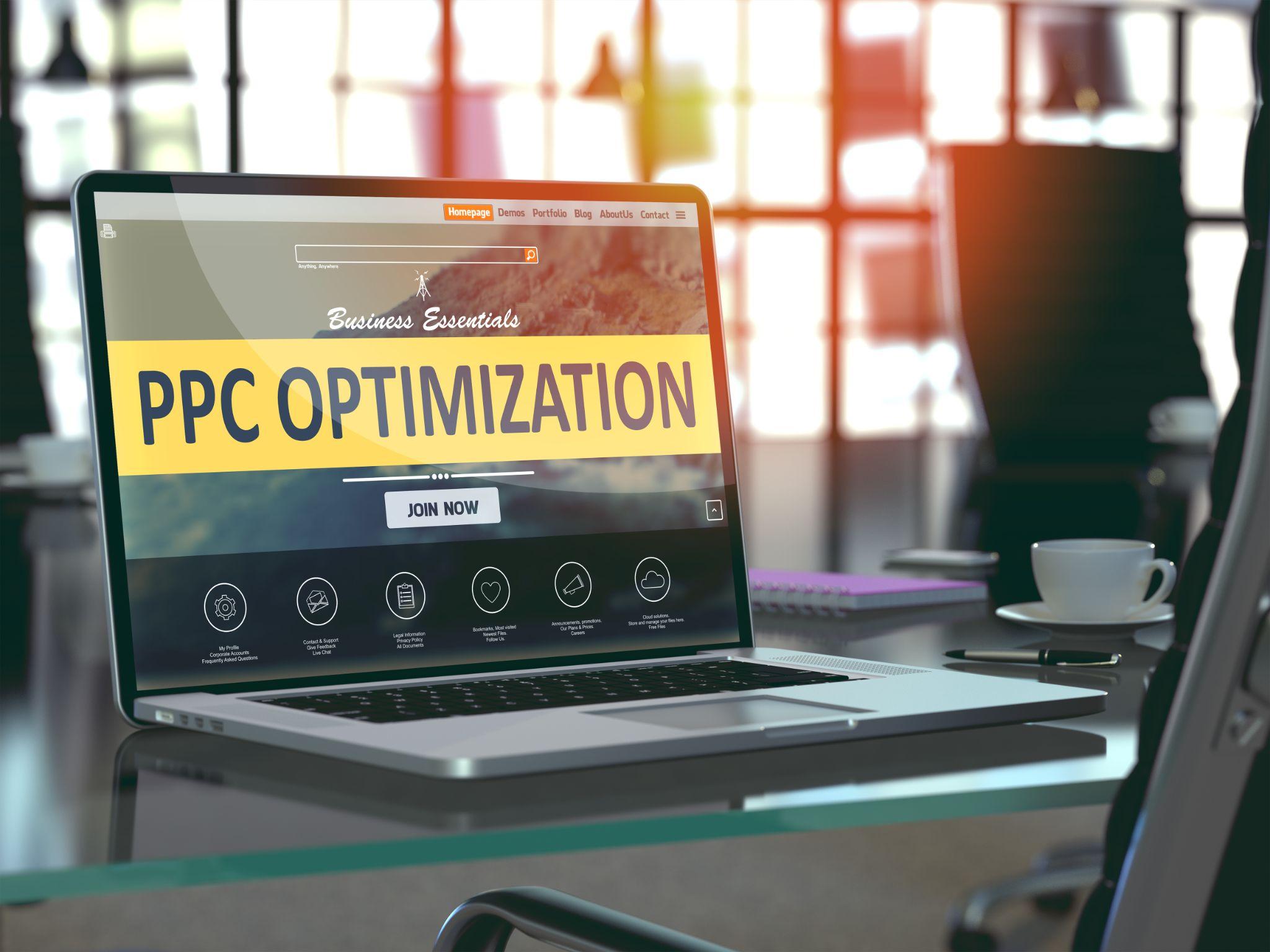
Affiliate marketing is a multi-billion-dollar industry—and it’s growing fast. At its core, it’s a performance-based strategy that rewards partners (affiliates) for driving traffic or sales to your brand.
With the right approach, affiliate marketing can help you reach new audiences, generate qualified leads, and increase conversions—all without the upfront costs of traditional advertising.
Affiliate marketing is a top acquisition channel for many marketers. It’s especially popular as a pre-purchase tactic—more than half (56%) of marketers use it at the awareness stage, while 32% of marketers use it for post-purchase retention.
In this comprehensive guide, our marketing experts will walk you through everything you need to know to decide if affiliate marketing is the right move for your brand—and how to do it right. Get affiliate marketing basics and more in-depth information below.
Affiliate marketing is a performance-based partnership in which you reward individuals or businesses—called affiliates—for promoting your products or services.
These affiliates use unique tracking links to send traffic to your website. When someone makes a purchase or completes a specific action through their link, the affiliate earns a commission.
With affiliate marketing, you only pay for actual performance, making it a cost-effective strategy. Depending on the program, commissions can be a flat fee or a percentage of the sale. Some programs also pay for leads, free trials, or clicks. The more effective an affiliate is at driving qualified traffic and conversions, the more they earn—making it a results-driven model that motivates their performance.
It’s a win-win: You gain new customers, and the affiliate gets paid for helping you drive results.
Plus, it’s highly scalable. You can work with a few trusted affiliates or build an entire network that constantly promotes your brand across blogs, social media, newsletters, and more.
In affiliate marketing, there are two main players: you, the company running the affiliate program, and the affiliate marketer, the partner promoting your products or services. Understanding the difference between these two roles is important so you can build a strategy that is advantageous for both sides.
As the company, you’re the merchant or brand. You create the affiliate program, choose what actions will earn commissions (such as sales, sign-ups, or clicks), and decide how much you’ll pay affiliates. You also provide the tools—like tracking links, creative assets, and reporting dashboards—to help affiliates succeed. Your job is to make the partnership appealing, easy to navigate, and worth the affiliate’s time.
Affiliate marketers, on the other hand, are your partners. They’re the individuals or businesses who promote your products to their audience using content, social media, websites, or email. Their goal is to drive traffic and conversions through their unique affiliate links. They earn a commission when they bring you results, so their motivation is aligned with yours: more clicks, sales, and revenue.

In general, there are three main types of affiliate marketing, each with their own set of rewards and drawbacks.
This is the most hands-off approach. In unattached affiliate marketing, the affiliate has no direct connection to the product or service they’re promoting. They typically rely on paid advertising, like Google Ads or social media ads, to drive traffic to the merchant’s site. There’s no personal brand, authority, or trust involved, which can make this model quick to launch but harder to sustain without a strong ad strategy.
In this model, the affiliate has some level of connection to the niche or audience they’re targeting, but they don’t necessarily use the product themselves. For example, a fitness blogger might promote gym equipment or supplements they haven’t personally tried.
Because the affiliate’s content aligns with the product, it feels more relevant and trustworthy to their audience, even if the endorsement isn’t based on direct experience.
This is the most authentic and trusted form of affiliate marketing. Here, the affiliate actively uses the product or service and promotes it based on personal experience.
Their content often includes testimonials, reviews, or tutorials, which makes their recommendations more credible. This approach builds the strongest trust with audiences and often leads to higher conversion rates.
To understand how affiliate marketing works in the real world, it’s helpful to look at how major platforms and brands are using it. Here are some of the best affiliate marketing examples.
Shopify’s affiliate program is geared toward entrepreneurs, influencers, content creators, and educators who help promote the platform. Affiliates earn a commission for every user who signs up for a Shopify full-price plan (for at least one month) through their referral link.
Affiliates often share tutorials, reviews, or success stories that highlight the benefits of using the platform across a wide range of business categories. The result? Valuable content that converts curious browsers into paying customers.
One of the largest and most well-known programs, Amazon Associates allows affiliates to promote millions of products from Amazon’s vast inventory. Affiliates earn a percentage of the sale each time someone makes a qualified purchase through traffic they drive to Amazon.
This flexibility makes it easy for bloggers, YouTubers, and influencers to monetize their content by recommending products that fit naturally into their niche.
Etsy’s program works similarly to Amazon Associates, but it focuses on handmade, vintage, and creative goods. Affiliates can share their favorite Etsy finds through blog posts, social media, or email campaigns. When someone clicks their link and makes a purchase, the affiliate earns a commission.
This program is especially popular with lifestyle and design influencers who align with Etsy’s unique, artisanal vibe.
As a media company, BuzzFeed integrates affiliate marketing into its content seamlessly. Through curated shopping lists, product reviews, and gift guides, BuzzFeed affiliates earn commissions from purchases made through embedded links. They partner with various brands and retailers, turning everyday editorial content into a revenue stream.
This example shows how larger publishers can scale affiliate marketing without making it feel like traditional advertising.
Affiliate marketing offers a powerful mix of performance, flexibility, and reach, making it one of the most effective strategies for brands looking to grow efficiently and sustainably.
One of affiliate marketing’s biggest advantages is that you only pay for results. Unlike traditional advertising, where you pay upfront without guaranteed outcomes, affiliate marketing rewards conversions—whether it’s a sale, lead, or click. This performance-based model helps you control costs while maximizing ROI, making it a smart option for brands that want to scale efficiently without overspending.
Affiliate marketing taps into the existing audiences of your partners. Affiliates already have trust and credibility with their followers, whether through blogs, social media, or niche communities. When they promote your product, they introduce it to new audiences who may not have discovered you otherwise. This expanded reach can increase brand awareness and bring high-intent traffic to your site.
Affiliates often create content that links back to your website, like blog posts, reviews, or product roundups. These backlinks can help improve your site’s authority in search engines and boost your SEO rankings. And since affiliates drive targeted traffic through these links, you’re not just gaining visibility—you’re attracting users who are more likely to convert.
When a trusted influencer or content creator recommends your product, it carries more weight than a paid ad. Affiliates act as third-party validators, giving your brand social proof and credibility, especially when they personally use your products or services. Their genuine endorsements can help you overcome skepticism, build trust faster, and influence buying decisions in a way that feels organic—not salesy.
Affiliate marketing is easy to scale. You can start with a few partners and then expand your network over time based on performance. You also have the flexibility to test different commission structures, promotional tactics, and platforms to see what works best. Whether you’re a small business or an established brand, affiliate marketing can grow with you and adapt to your evolving goals.

While affiliate marketing offers a range of benefits, it’s not without its challenges. To build a successful program, you must navigate a few key hurdles that could impact performance, scalability, and long-term success. Here are some of the challenges brands face in 2025.
Because affiliates operate independently, you don’t always have control over how they represent your brand. Poorly written content, outdated messaging, or misleading claims can harm your reputation.
It’s crucial to vet partners carefully and provide clear brand guidelines to maintain consistency and trust across every touchpoint. Even well-meaning affiliates can dilute your brand or mislead potential customers without oversight.
Affiliate marketing can be incredibly effective—but it’s not a “set it and forget it” strategy. As competition rises and platforms evolve, you’ll need to stay proactive. That means focusing on content quality, diversifying traffic sources, and maintaining strong relationships with partners.
If you don’t have the time, resources, or expertise to manage your affiliate marketing strategy, consider hiring an experienced affiliate marketing agency for help.
Google’s latest EEAT algorithm updates—Experience, Expertise, Authoritativeness, and Trustworthiness—have raised the bar for content quality. That means it’s no longer enough to pump out fully AI-generated blog posts or keyword-stuffed product reviews.
Your affiliates must create original, valuable content that demonstrates real knowledge and credibility to stay competitive. This can be especially challenging for newer affiliates or brands hoping to scale quickly with content that lacks depth or authority.
Social media ad costs have climbed significantly in recent years, and many affiliates rely on platforms like Instagram, Facebook, TikTok and YouTube to drive traffic. If your program depends too heavily on these paid channels, you may see your profit margins shrink.
There’s also the risk of relying on just one or two platforms—if a global outage occurs or algorithms shift overnight, your traffic and conversions could take a hit.
The 80/20 rule—also known as the Pareto Principle—applies to affiliate marketing just like it does in many other areas of business. In most affiliate programs, roughly 80% of your results will come from just 20% of your affiliates.
These top performers consistently drive most of your traffic, conversions, and revenue. Understanding who they are and why they succeed can help you focus your efforts and resources more strategically.
Instead of spreading your time evenly across your entire affiliate network, the 80/20 rule encourages you to identify and nurture your high-value partners. That might mean offering them higher commission rates, exclusive promotions, or closer collaboration on content and campaigns.
By doubling down on what’s working, you can scale faster, improve ROI, and build stronger, more effective partnerships.

A successful affiliate marketing program doesn’t happen by chance—it requires thoughtful planning, strong partnerships, and ongoing optimization. Whether you’re just launching your first affiliate program or looking to scale an existing one, here are key strategies to help you build a program that drives meaningful results.
Start by identifying what you want to achieve with your affiliate marketing program. Are you focused on increasing sales, growing brand awareness, driving traffic, or building a lead pipeline?
Defining your primary goals will help shape every decision you make—from the affiliates you work with to the commission structure you offer. Set measurable KPIs, such as conversion rates, revenue from affiliate channels, or average order value, so you can track performance over time.
If you’re running your program in-house, make sure you have the tools in place to track affiliate performance accurately and manage payments efficiently.
The platform you use to run your affiliate program should offer reliable tracking, flexible commission settings, real-time reporting, and easy onboarding for new affiliates. Popular platforms include ShareASale, Impact, Partnerize, and Refersion.
Accepting every affiliate who applies is tempting, but quality matters more than quantity. Look for affiliates who align with your brand, serve a relevant audience, and have a track record of producing high-quality content.
This can include bloggers, influencers, YouTubers, newsletter publishers, and industry experts. Build real relationships with your top partners. This way, they’re more likely to stay loyal, and work hard to deliver results.
To attract and retain high-performing affiliates, you need to make it worth their while. Start with a competitive base commission, then consider bonuses for top performers or tiered structures that reward increased conversions.
Offering performance incentives like exclusive promotions, early access to new products, or higher commissions for seasonal campaigns can motivate affiliates to go the extra mile.
Affiliates need the right tools to promote your brand effectively. This includes high-quality product images, pre-written copy, banners, brand guidelines, and exclusive offers.
Make it easy for them to plug into your brand and share your message. The more seamless the experience, the more likely they will stay engaged and active.

Affiliate marketing requires nurturing. Track performance regularly and identify which affiliates, content types, or campaigns drive the best results. Provide feedback, share data insights, and offer suggestions for improvement.
Open communication builds stronger partnerships and gives you the opportunity to course-correct when needed.
Monitor for compliance and misuse of affiliate links, coupon codes, or misleading content. A strong affiliate program balances trust and oversight to maintain your brand’s integrity.
While affiliates are independent partners, their messaging nevertheless reflects on your brand. Set clear guidelines to ensure consistency in tone, claims, and use of promotional materials.
Choosing the right affiliate payment model is essential for building a successful, sustainable program. The model you choose determines how and when affiliates are compensated, and it directly impacts how attractive your program is to potential partners. Below are some of the most common affiliate payment models brands use—and how they work.
This is the most widely used model in affiliate marketing. With pay-per-sale, affiliates earn a commission when someone makes a purchase through their referral link. It’s a performance-based approach that ensures you only pay when revenue is generated. This model is popular with e-commerce brands because it aligns payment with actual business outcomes.
In this model, affiliates are paid when they generate a qualified lead. That could mean a newsletter sign-up, account registration, form submission, or any other pre-sale action that indicates interest. Pay-per-lead is especially useful for service-based businesses, SaaS companies, or B2B brands that rely on lead generation rather than direct sales.
This model rewards affiliates for bringing in long-term customers. Instead of a one-time payment, affiliates earn a percentage each time the referred customer renews a subscription or continues paying for a service. This model works well for SaaS products, membership-based businesses, and anything with ongoing billing. It encourages affiliates to focus on promoting quality products that retain customers.
Some brands offer a flat fee per conversion—whether that’s a sale, sign-up, or other defined action. This model keeps things simple and predictable for both you and your affiliates. It’s especially useful when selling products with consistent pricing or services with fixed fees, and it can work well for campaigns focused on volume rather than high individual transaction values.

Less common in affiliate programs, this model pays affiliates based on the number of clicks they drive to your website, regardless of whether a sale occurs. While it can help increase brand exposure and traffic, PPC models carry more risk since you’re paying for activity, not conversions. It’s best suited for awareness-focused campaigns or programs where your primary goal is visibility.
With a tiered system, commission rates increase as affiliates hit specific performance milestones—such as driving more sales or revenue within a set time frame. This structure incentivizes top-performing affiliates to stay engaged and encourages newer ones to grow their efforts. It’s a smart way to reward loyalty and boost long-term performance.
Hybrid payment models combine two or more of the options above. For example, you might offer a flat fee for each lead plus a percentage of any resulting sale. These models give affiliates more earning potential and allow brands to customize compensation based on different goals, like both short-term conversions and long-term customer value.
Choosing the best payment model depends on your business type, margins, and overall strategy. The key is to find a structure that motivates affiliates while protecting your bottom line—and leaves room for flexibility as your program evolves.
If you decide to work with an affiliate marketing agency to develop your affiliate marketing programs, the agency can help you negotiate payment structures with your affiliates.
Look for affiliates who align with your brand values and speak to your target audience. These might include bloggers, influencers, niche content creators, or thought leaders in your industry.
You can find affiliates through affiliate networks, social media, outreach campaigns, or by launching your program on a platform like ShareASale, Impact, Partnerize or Refersion. Vet them carefully to ensure their content and audience are a good match for your brand.
Commission rates vary depending on your industry, product margins, and customer value. You can also offer flat rates for leads or app installs. In fact, nearly half (48.9%) of affiliate programs offer a flat rate, versus a commission, according to this report.
Make sure your commissions are competitive enough to attract top-performing affiliates and consider using tiered or hybrid models to reward high-volume partners.
Yes. To manage tracking, reporting, payments, and affiliate onboarding, you’ll need affiliate marketing software or a network platform. These tools ensure accurate attribution and make it easier to scale your program. Popular options include Refersion, LeadDyno, and Rakuten. Some e-commerce platforms like Shopify also offer built-in affiliate tools or integrations.
Most affiliate platforms offer real-time dashboards where you can monitor clicks, conversions, revenue, and top-performing affiliates. Tracking links and cookies are used to attribute actions to the correct affiliate. Be sure to review performance regularly so you can optimize your program, identify your best partners, and adjust commission structures as needed.
It can—but only if you partner with affiliates who don’t align with your values or who use misleading tactics. That’s why it’s essential to set clear brand guidelines, monitor affiliate content, and enforce compliance. When you align with trusted voices and deliver authentic, high-quality promotion, consumers are likely to trust you more, not less.
Affiliate marketing is a long-term strategy. While you might see some early wins, building a network of active, high-performing affiliates takes time. Plan to invest in recruitment, support, and optimization. With the right foundation, your program can become a reliable revenue channel that scales with your business.
Influencer marketing typically involves a flat fee for a sponsored post or campaign, regardless of performance. Affiliate marketing, on the other hand, compensates partners based on results. Many influencers now operate as affiliates, blending both models to monetize their platforms more effectively.

An affiliate marketing agency—like Socialfly—can help you build a strong foundation for your program by identifying the right affiliates, setting up the right tracking and commission structures, and creating a strategy that aligns with your business goals.
We have established relationships and industry expertise. Our team can connect you with high-performing partners more quickly—this is especially helpful if you’re new to affiliate marketing and want to avoid common pitfalls while accelerating results.
Socialfly helps brands launch and scale impactful affiliate marketing programs. From identifying the right partners to building a strategy that drives results, we handle every step with precision and creativity.
Whether you’re just getting started or looking to take your affiliate marketing program to the next level, our team is here to help you grow through performance-driven partnerships. Get in touch to learn more about our services.